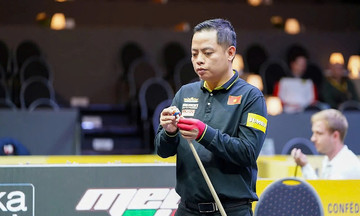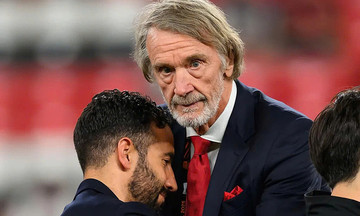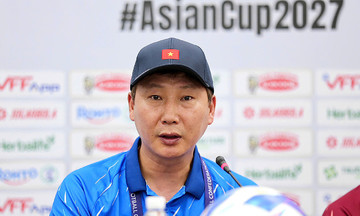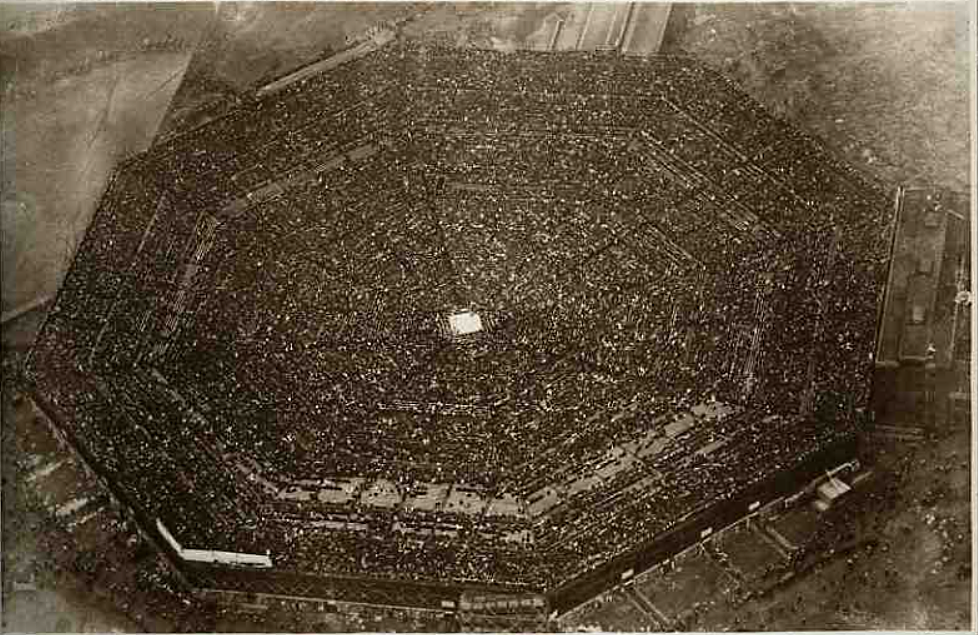 |
Over 80,000 people came to Boyle’s Thirty Acres to watch the world heavyweight title fight between Jack Dempsey and Georges Carpentier on 2/7/1921. Photo: Thefightcity |
Over 80,000 people came to Boyle’s Thirty Acres to watch the world heavyweight title fight between Jack Dempsey and Georges Carpentier on 2/7/1921. Photo: Thefightcity
On a sweltering summer afternoon at Boyle’s Thirty Acres, a makeshift stadium erected in Jersey City, New Jersey, the dapper French boxer Georges Carpentier, light heavyweight champion and decorated World War I pilot, faced Jack Dempsey, the American street fighter widely disliked for dodging the draft.
The contrast between the "European knight" and the "working-class brawler" turned the match into a blockbuster. Over 80,000 spectators bought tickets, generating over 1.5 million USD in revenue, making it the first sporting event to surpass the million-dollar mark.
When Carpentier fell to the canvas in the 4th round after Dempsey's barrage of punches, the crowd roared, having just witnessed a major sporting event. But no one realized that this moment was transforming the history of sports media.
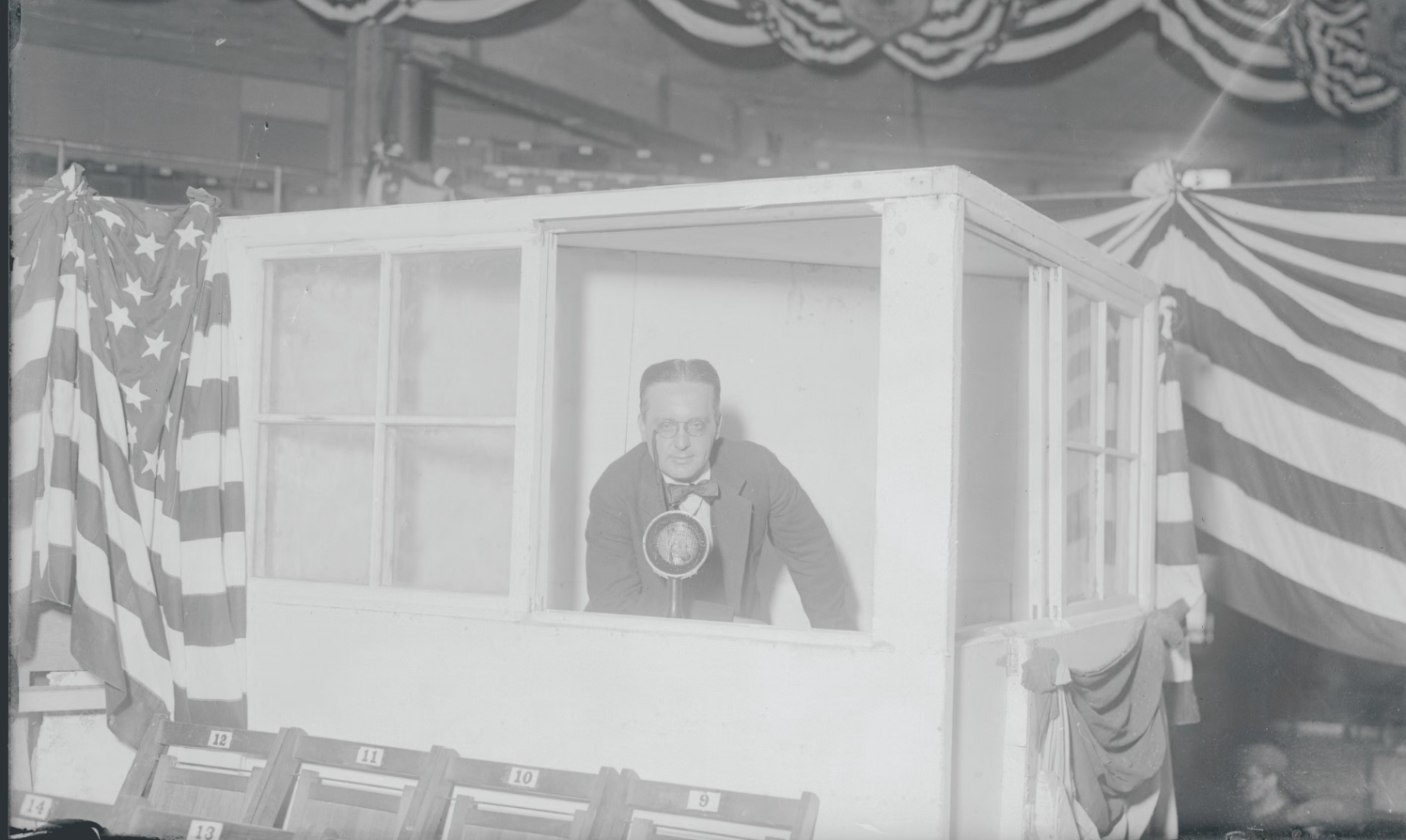 |
Andrew White initiated the radio revolution in America. Photo: Bettmann Archive |
Andrew White initiated the radio revolution in America. Photo: Bettmann Archive
At the ringside, Major J. Andrew White, a radio enthusiast, held a phone, hot after 4 hours of describing the fight under the sun. He was attempting to turn the boxing match into America's first live radio broadcast.
This idea arose a few months prior when White was president of the National Amateur Wireless Association (NAWA). He wanted to demonstrate that radio wasn't just for the military, but could bring music, news, and sports into homes. White selected the Dempsey-Carpentier match to raise funds for a veterans' charity founded by Anne Morgan, daughter of financier J.P. Morgan.
The 15,000 USD cost deterred many sponsors, who deemed it a "crazy idea." The opportunity arose when White reconnected with a young RCA engineer, David Sarnoff, who had proposed broadcasting music over radio in 1916. Sarnoff had only 1,500 USD but agreed to contribute.
To cover over 300 km, White needed a powerful transmitter. Learning that the US Navy possessed a 3.5 kW transmitter built by General Electric, he enlisted the help of Franklin D. Roosevelt, then president of the Navy Club and future US president, who granted his request. White hired a barge to transport the equipment, including a telephone booth, 160 km down the Hudson River to Hoboken, then erected a massive antenna connecting a 137-meter tower to the train station's clock tower.
Simultaneously, White sent 7,500 letters urging radio enthusiasts across the East Coast to participate. By mid-June, 58 theaters, schools, fire stations, and homes had installed public loudspeakers, awaiting the broadcast.
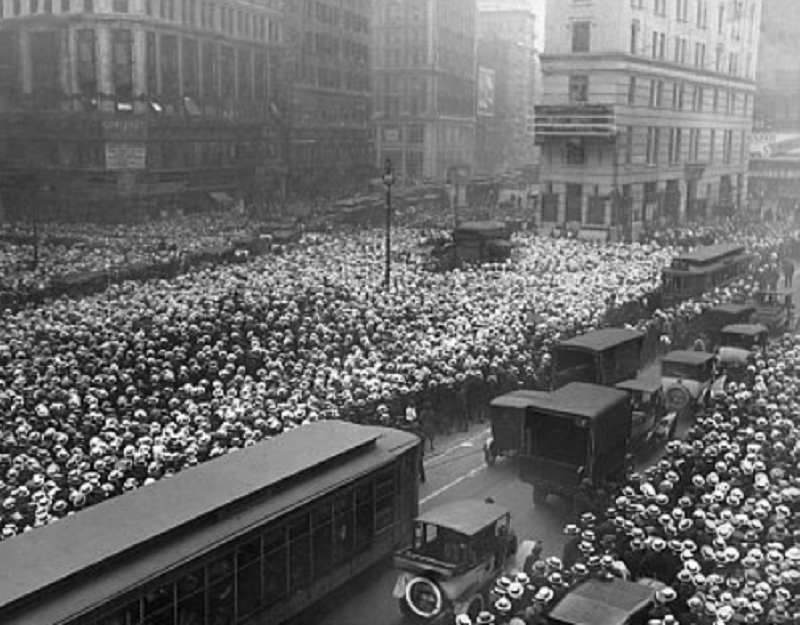 |
The crowd outside The New York Times waits for the latest news. Photo: Thefightcity |
The crowd outside The New York Times waits for the latest news. Photo: Thefightcity
Just 24 hours before the match, AT&T unexpectedly blocked the connection between the ringside commentary position and the telephone network to prevent RCA from benefiting. White improvised, running a dedicated 4-km line directly from the stadium to the Hoboken transmitter, creating a "private telephone line" beyond AT&T's control.
On the afternoon of 2/7/1921, spectators lined up for kilometers outside the newly opened stadium. As the band played the French national anthem, La Marseillaise, Carpentier entered the ring in a light gray robe, smiling and waving. Dempsey, with a stern expression, awaited his moment to strike.
In Hoboken, a technician tapped out high-speed Morse code for White to read, delivering blow-by-blow commentary. The bell signaling the start and end of rounds was struck manually to synchronize with the fight. The signal reached over 400 km, an audience of at least 350,000 people—a record for any form of media at the time.
When Carpentier fell in the 4th round, White concluded the broadcast with, "Dempsey remains the world heavyweight champion." Immediately afterward, the telephone line went dead due to a depleted battery, and the transmitter's amplifier exploded.
But the mission was accomplished.
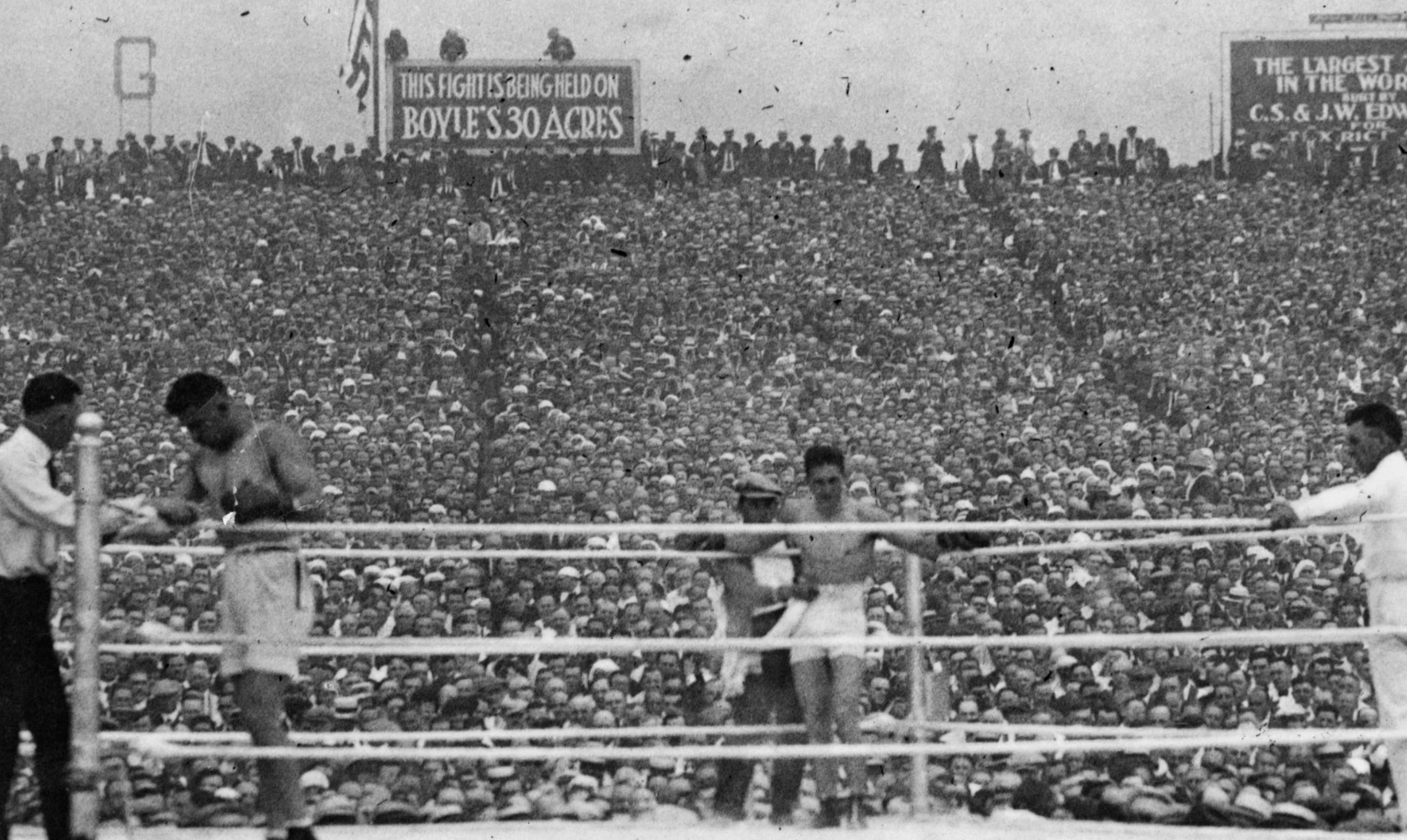 |
The stadium is packed with spectators as Jack Dempsey (left) and Georges Carpentier rest between rounds during their 1921 world heavyweight title fight. Photo: The Ring Magazine |
The stadium is packed with spectators as Jack Dempsey (left) and Georges Carpentier rest between rounds during their 1921 world heavyweight title fight. Photo: The Ring Magazine
After the match, White's office received over 4,000 letters and hundreds of congratulatory telegrams. Listeners confirmed they received the results faster than any other news outlet. For the first time, radio proved it could deliver news and sports to the public instantaneously.
From there, "radio fever" swept across America. Demand for receivers soared, from 60 million USD in 1922 to 358 million USD just two years later. Commercial stations sprang up in most cities, creating an advertising industry tied to music, news, and sports. RCA quickly applied for a permanent broadcasting license, opening WJZ in New York, the nucleus of the future NBC network.
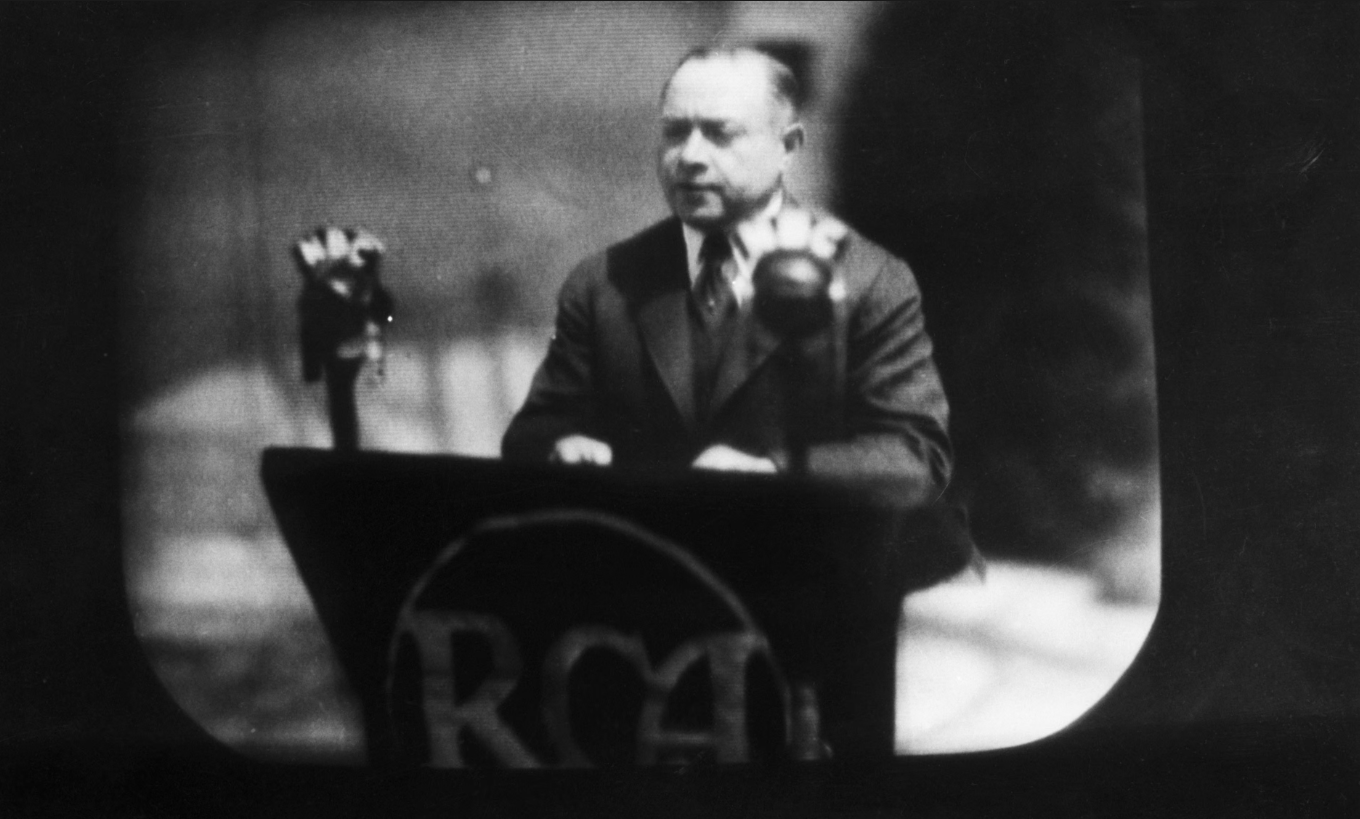 |
David Sarnoff built RCA into one of the most powerful broadcasting forces in the world. Photo: Bettmann Archive |
David Sarnoff built RCA into one of the most powerful broadcasting forces in the world. Photo: Bettmann Archive
Andrew White, the "storyteller" who ushered in a new era, gradually retreated from the spotlight. When he died in the mid-1960s, hardly any newspapers reported it. In contrast, David Sarnoff capitalized on this success, building RCA into a powerful radio and television empire. He launched NBC in 1939 and pioneered color television in the 1960s, earning the title "father of modern media."
The Dempsey-Carpentier fight was not just the "fight of the century" but also the moment sports entered the modern media age. From makeshift wires and a massive transmitter on the Hudson River, a multi-billion dollar industry was born, shaping how humanity has followed sports for over 100 years.
Compiled by Hong Duy





